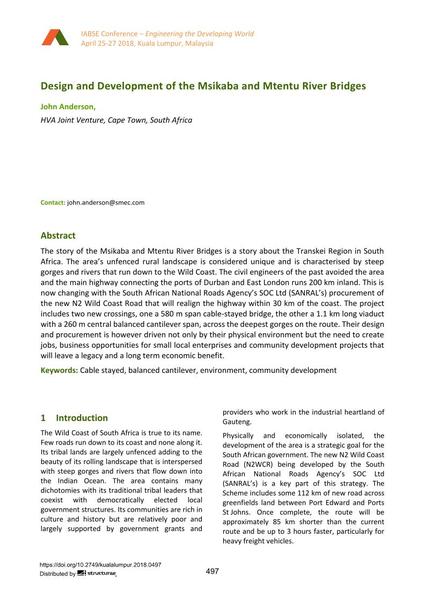Design and Development of the Msikaba and Mtentu River Bridges

|
|
|||||||||||
Bibliographic Details
| Author(s): |
John Robert Beveridge Anderson
(HVA Joint Venture, Cape Town, South Africa)
|
||||
|---|---|---|---|---|---|
| Medium: | conference paper | ||||
| Language(s): | English | ||||
| Conference: | IABSE Conference: Engineering the Developing World, Kuala Lumpur, Malaysia, 25-27 April 2018 | ||||
| Published in: | IABSE Conference Kuala Lumpur 2018 | ||||
|
|||||
| Page(s): | 497-504 | ||||
| Total no. of pages: | 8 | ||||
| DOI: | 10.2749/kualalumpur.2018.0497 | ||||
| Abstract: |
The story of the Msikaba and Mtentu River Bridges is a story about the Transkei Region in South Africa. The area’s unfenced rural landscape is considered unique and is characterised by steep gorges and rivers that run down to the Wild Coast. The civil engineers of the past avoided the area and the main highway connecting the ports of Durban and East London runs 200 km inland. This is now changing with the South African National Roads Agency’s SOC Ltd (SANRAL’s) procurement of the new N2 Wild Coast Road that will realign the highway within 30 km of the coast. The project includes two new crossings, one a 580 m span cable-stayed bridge, the other a 1.1 km long viaduct with a 260 m central balanced cantilever span, across the deepest gorges on the route. Their design and procurement is however driven not only by their physical environment but the need to create jobs, business opportunities for small local enterprises and community development projects that will leave a legacy and a long term economic benefit. |
||||
| Keywords: |
balanced cantilever environment cable-stayed community development
|
||||
